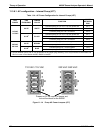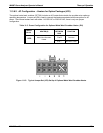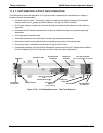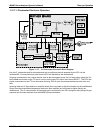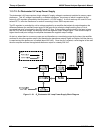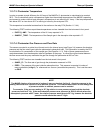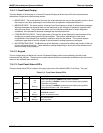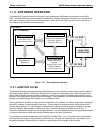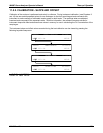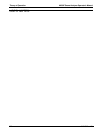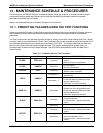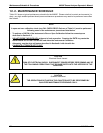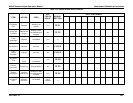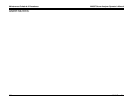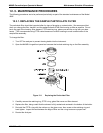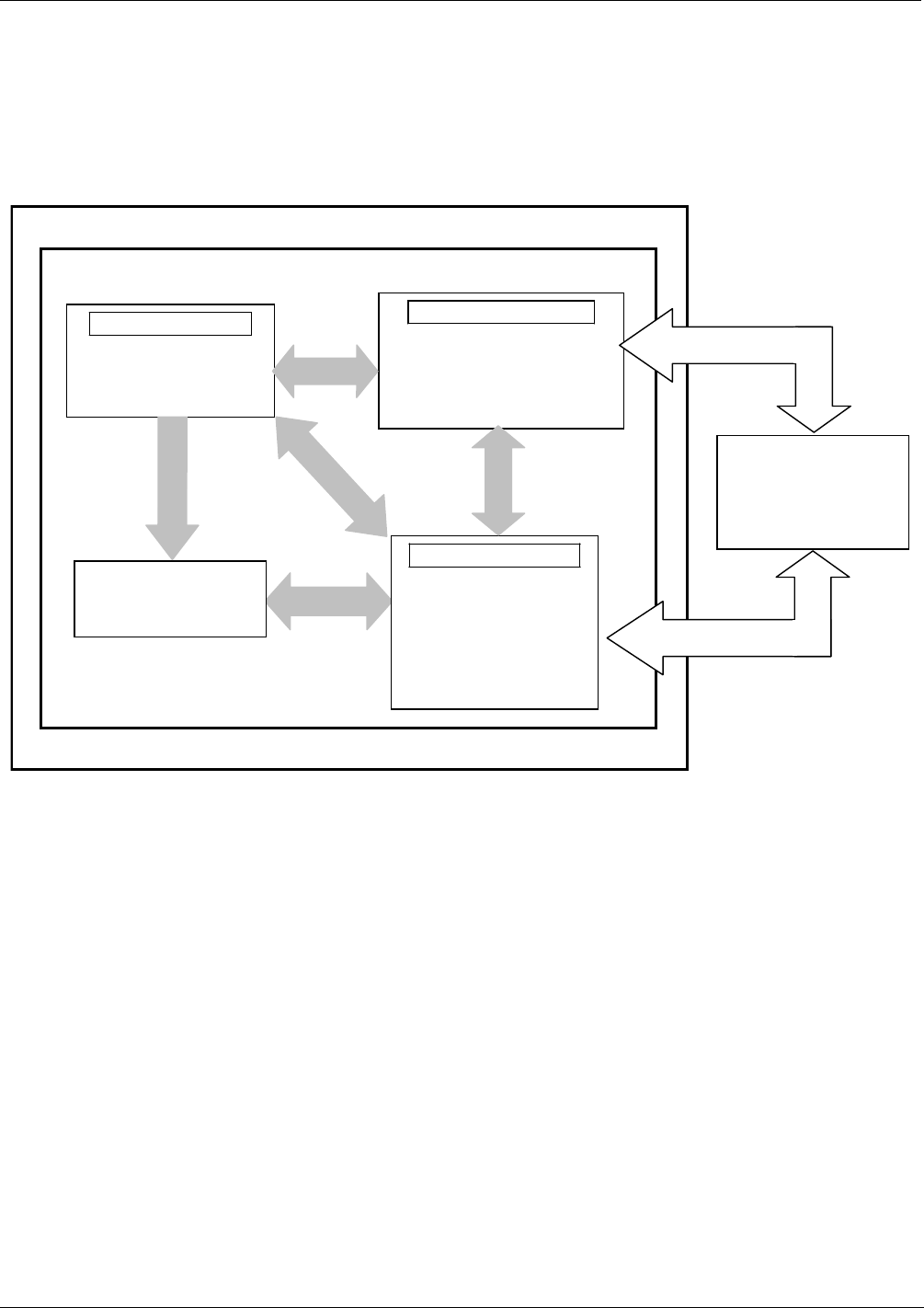
Theory of Operation M400E Ozone Analyzer Operator’s Manual
11.5. SOFTWARE OPERATION
The Model 400E Ozone Analyzer is at its heart a high performance, 386-based microcomputer running MS-
DOS. Inside the DOS shell, special software developed by Teledyne Instruments interprets user commands vie
the various interfaces, performs procedures and tasks, stores data in the CPU’s various memory devices and
calculates the concentration of the sample gas.
DOS Shell
API FIRMWARE
Analyzer Operations
Calibration Procedures
Configuration Procedures
Autonomic Systems
Diagnostic Routines
Memory Handling
IDAS Records
Calibration Data
System Status Data
Interface Handling
Sensor input Data
Display Messages
Keypad
Analog Output Data
RS232 & RS485
External Digital I/O
Measurement
Algorithm
ANALYZER
HARDWARE
PC/104 BUS
PC/104 BUS
Figure 11-21: Basic Software Operation
11.5.1. ADAPTIVE FILTER
The Model 400E software processes sample Gas Measurement and Reference data through a built-in adaptive
filter built into the software. Unlike other analyzers that average the output signal over a fixed time period, the
Model 400E averages over a set number of samples, where a new sample is calculated approximately every 3
seconds -this is technique is known as boxcar averaging. During operation, the software automatically switches
between two different length filters based on the conditions at hand.
During conditions of constant or nearly constant concentration, the software, by default, computes an average of
the last 32 samples, or approximately 96 seconds. This provides the calculation portion of the software with
smooth stable readings. If a rapid change in concentration is detected, the filter length is changed to average
the last 6 samples, approximately 18 seconds of data, to allow the analyzer to respond more quickly. If
necessary, these boxcar lengths can be changed between 1 and 1000 samples but with corresponding tradeoffs
in rise time and signal-to-noise ratio (contact customer service for more information).
Two conditions must be simultaneously met to switch to the short filter. First, the instantaneous concentration
must exceed the average in the long filter by a fixed amount. Second, the instantaneous concentration must
exceed the average in the long filter by a portion, or percentage, of the average in the long filter.
216 04315 Rev. C1



